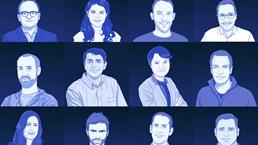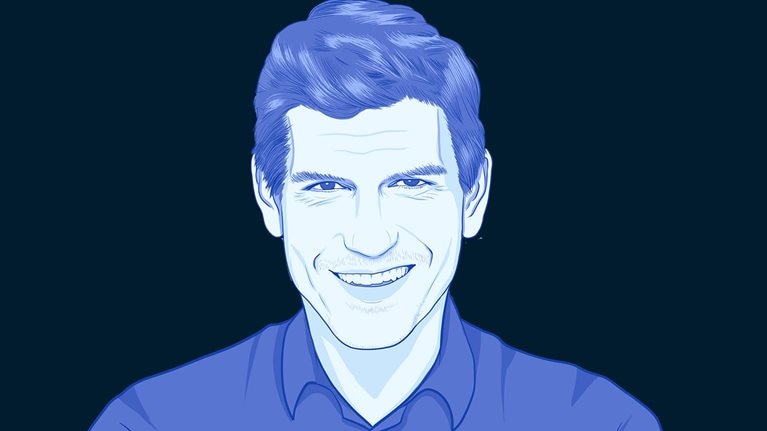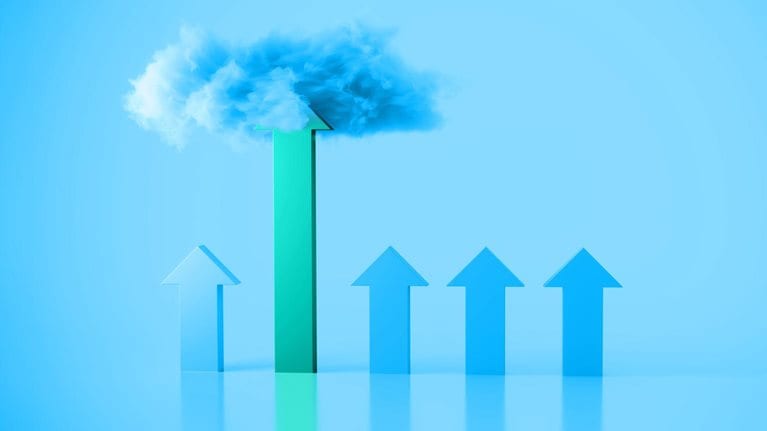Consumers are increasingly demanding sustainable products and services,1 and research from Leap by McKinsey shows that more than 90 percent of businesses plan to meet this demand in part through new-business building.2 Climate tech start-up zolar aims to address the climate crisis by making the process easier for homeowners to generate their own solar energy to help meet their energy needs and reduce their carbon footprint. Using the zolar online configurator, which has an intelligent algorithm, homeowners can arrange installation of tailored residential photovoltaic (PV) systems. The zolar Compass, an intelligent energy management system and app, accompanies homeowners throughout the use of their PV solution and increases its efficiency and savings. In a conversation with McKinsey’s Jerome Königsfeld, zolar cofounder Alex Melzer and managing director Dr. Sarah Müller explain how zolar aims to instill sustainable habits among consumers by appealing to their intrinsic motivations. They highlight the importance of digitalization, strong partnerships, continuous supply chain optimization, and experienced C-suite leadership when a company is growing quickly and scaling up.
Jerome Königsfeld: How did you create and validate the concept for zolar?
Alex Melzer: My cofounder, Gregor Loukidis, and I knew we wanted to have a substantial impact on climate protection and decided to focus our efforts on consumers. Consumers change either because they have to—such as when dictated through rules, bans, and laws—or because they want to—when they have personal and intrinsic motivations. A solar panel system on one’s house is a perfect example of the latter. Most people buy solar systems for the financial savings on electricity and because they are helping the environment. We realized that it was not yet possible to buy solar panels online in Germany and hypothesized that we could nudge more people to install solar panels through a digital platform that made the buying journey easier and more transparent.
For customers, the most complex part of the customer journey is selecting the right system for them, such as the right panels and related equipment based on a wide range of criteria, including roof size and expected energy consumption. To facilitate the selection process, we developed an easy-to-use online configurator. Our first paying customer (who placed the order via email because we hadn’t yet built our e-commerce engine) affirmed that a consumer was willing to buy a €25,000 product online without meeting anyone beforehand at their home. That was our validation milestone. We drove to the customer’s home and installed the system ourselves within a day and a half.
Jerome Königsfeld: What is your product today, and what does a typical customer journey look like?
Sarah Müller: Most of our customers find us through referrals or digital marketing channels and then come to our digital platform. They first provide us with some general information in an online questionnaire about their household energy usage and their physical house. After confirming the inputs, we grant customers access to our online configurator so they can identify the ideal system to meet their needs and buy it fully online. With the purchase, we become the contract partner for our customer and then delegate the actual installation of the system to one of our 700 local installation partners. We handle all customer communications and coordinate scheduling of the installation to ease the process for all involved parties. After installation, we continue to accompany our customers with our zolar Compass app throughout the entire lifetime of their photovoltaic system.
Jerome Königsfeld: How do partnerships contribute to the growth of your business?
Sarah Müller: Partnerships are a very important channel for us to scale. We look for partners with a high target-group fit that also support our mission of fighting climate change. We have set up partnerships predominantly with organizations involved in the rapidly expanding electric-vehicle (EV) market, as EV and PV are perfect complements. But we also cooperate with other partners that serve homeowners, such as the DIY superstore OBI. For example, our partner ADAC (General German Automobile Club) hosts a customized version of our configurator on its website and offers our solar solutions to its more than 20 million members. We also have an established partnership with Toyota to encourage electric-vehicle owners to charge their car more sustainably and affordably with solar power.
Alex Melzer: With our first customer installation, we also realized that our business would not be scalable without reliable installation partners. Especially because we knew demand was high for solar-panel installation professionals and there was a labor shortage, we focused from the beginning on establishing partnerships with companies that had the requisite solar expertise and could be reliably counted on to install our systems. We conducted interviews with solar-installation contractors and learned they were bothered by the supply chain logistics, the paperwork, the required working capital, and generally all duties that were not part of the physical installation. Hence, we decided to assume responsibility for all these tasks on our platform, enabling our supply partners to grow but with a much higher level of comfort. Today, we successfully cooperate with more than 700 craft companies throughout Germany. And, just as on the consumer side, we have fully digitalized the process for our installation partners, helping to ensure that by working with us, they can scale efficiently.

Shaper interviews
Jerome Königsfeld: What are the major challenges for zolar today?
Sarah Müller: Last year was an exceptional year for zolar. The war against Ukraine unleashed an energy crisis and an utmost urgency for energy independence. There were times when demand on our platform was tenfold. At the same time, supply chains and component availability were still strained by the pandemic. But we came out stronger than ever by focusing on our processes and customer experience.
With this surge, the challenges of securing materials supply and installation capacity have intensified. To improve resilience, we have secured and diversified direct supply chains with manufacturers, invested heavily in our own warehouse capacities, and increased our safety stocks. Further, we grew our installation capacity by expanding our network of craftsman partners and making the installation of our systems as efficient as possible. We managed to reduce installation time by 50 percent. In 2023, value for money, quick availability, and a great customer experience are the driving factors in the PV purchase decision.
Jerome Königsfeld: How did you raise funding to finance zolar’s growth?
Alex Melzer: Once we were able to demonstrate revenue from actual product installations with early customers, we raised funds from angel investors. By comparison, our discussions with venture capitalists back in 2016 were challenging because they preferred a subscription-based business that would generate recurring revenue. However, we were able to demonstrate that our business model offered a substantial one-off profit with each sale and the potential for recurring revenue. Every successful sale starts a 20-year-plus customer relationship, creating cross-selling opportunities for adjacent products—for example, in insurance and energy management—and recurring revenue streams.
We were also able to attract investors by highlighting the potential of the growing market for climate technology. Even though climate tech wasn’t yet a mass market in 2016, we offered a solution that was beneficial and profitable. Today, there are more climate tech investors, so we don’t have to explain the importance of addressing the climate crisis via tech anymore. Instead, we must explain how the energy market works and how we differentiate ourselves from competitors.
Jerome Königsfeld: How did you set up your team and grow it over time?
Alex Melzer: Our growth journey began with just Gregor and me working in a garage. Now, we have over 450 employees. As a first-time founder, I devoted a lot of time to reading, exchanging ideas with other entrepreneurs, and receiving coaching to help me develop personally at the same rate as the company. Then, in 2019, my cofounder stepped down, and I started to build a C-suite team with experienced experts for each function to steer the company in the right direction. In the past year and a half, we’ve established a strong second leadership level with a mix of internal and external hires.
As I reflected on the past few months, I questioned what it would take for us to leap forward as an organization. From my CEO perspective, the answer seemed daunting; however, from my founder’s standpoint, it surprisingly boiled down to a simple solution. We needed an experienced leader who has achieved rapid growth in tech companies with complex operational models. Consequently, I decided to hire a new CEO, Jamie Heywood, who has experience across various innovative high-growth companies such as Uber and Amazon in multiple countries.
Jerome Königsfeld: What are your next growth frontiers?
Sarah Müller: We have three major growth frontiers for contributing to the government’s goal to reach 80 percent renewable energy by 2030: new product development, international expansion, and growing partnerships. With our new energy-management software, we aim to provide customers with a solution that will not only manage their energy consumption but also enable them to reduce their energy costs. This is just the beginning of what we believe will be a major shift in the way households manage and use their energy resources, helping them to save on energy costs and helping society to reduce its carbon footprint. Second, we plan to internationalize our footprint. Although Germany, with high energy prices and physically large and stable roofs, served as the ideal starting point for zolar, we want to target other European countries with many large, single-family homes. Third, we are having more conversations to create new partnerships with leading brands in the consumer sector and aim to continue developing our existing relationships to drive our vision of a green world for everyone even faster.


